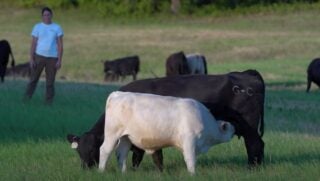According to the Natural Resources Defense Council, 40 percent of food in the United States today goes uneaten … which means that Americans are throwing out the equivalent of $165 billion each year in food waste.
Food waste was a hot topic at the Bayer AgVocacy Forum this week in San Antonio, Texas. Panelists Jack Bobo, Senior Vice President, Chief Communications Officer, Intrexon; Carrie Calvert, Director of Tax and Commodity Policy, Feeding America; and Barbara Cohen, Co-Founder, Food Cowboy dove into the topic further and shared several fascinating facts and figures during the round table discussion “The Multi-Point Approach to Ending Food Waste.” Here’s just a sample of some of their noteworthy comments:
- “If you throw away lean, fine, and textured beef, that’s between 400 and 700 million pounds of food that is going into waste,” Bobo said. “That is double the amount of food waste in the country of Belgium for a year. That’s a pretty big loss.”
- “Twenty-four million pounds of food is wasted in the supply chain alone,” Cohen said.
- “Apples are the third most wasted food in most developed countries,” Bobo said, who touted the benefits behind the non-browning Arctic Apple and hinted that the avocado may be the next product headed that way.
- “There are 21 states that do not allow products to be donated past (sell-by) date,” Calvert said.
- “Last night they gave us a 13-inch plate … If they had given us a nine-inch plate, most of us would have eaten 10 percent less food,” Bobo said.
Despite these key stats on food waste, it was the general consensus among the panel members that mainstream and social media should stop focusing on dumpster diving and consumer waste, but to instead look at all of the positive achievements already put in place along the supply chain and further opportunities to cut back on food waste there.
“I want to push things upstream. Let’s talk about why your stuff can’t be harvested or let’s talk about when the market goes away,” Calvert said.
In addition to some tax incentives and minor compensation from food banks, Feeding America is working on it making it easier for farmers to donate product straight from the field by creating packing sheds for donated product. Calvert gave the example of one food bank in Wisconson that has even started a flash freezing facility.
“We know that it costs something for the grower or producer to donate something so we really want to help strengthen these incentives that help them break even or improve their costs of what they are donating and that in return helps us gain access to really nutritious food that we want to give to the people we are serving,” Calvert said.



